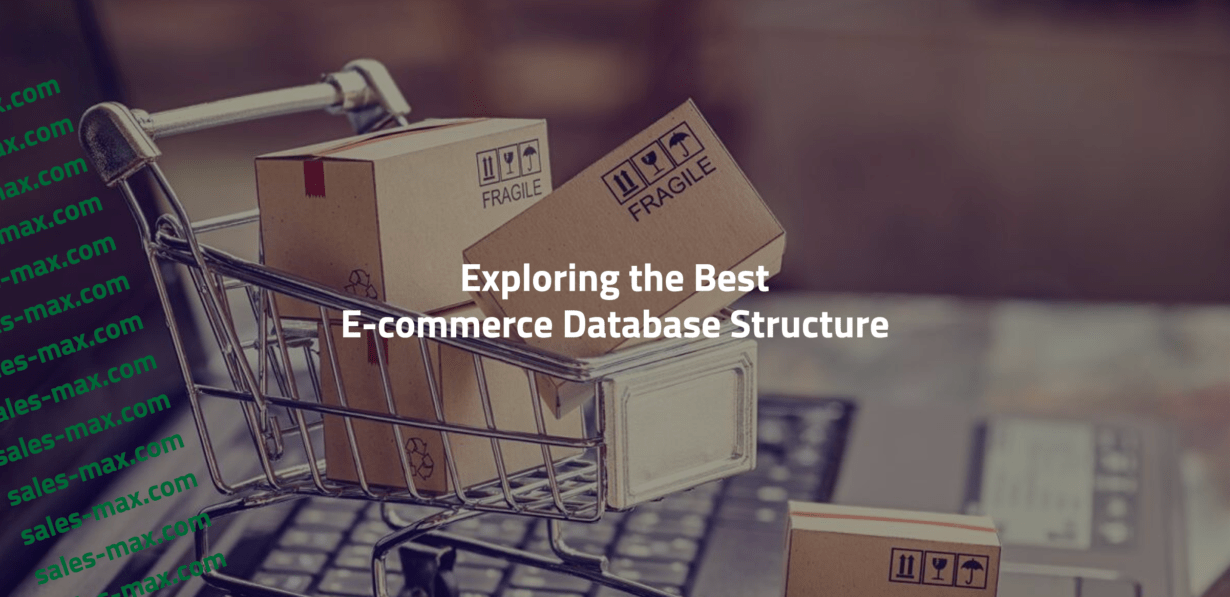All, Design, Ecommerce, Web Development, Website Exploring the Best E-commerce Database Structure

Building a Solid Foundation: Exploring the Best E-commerce Database Structure
Behind every successful e-commerce platform lies a robust and well-organized database structure. A well-designed database not only ensures efficient data management but also lays the groundwork for seamless user experiences and business growth. In this article, we’ll delve into the key considerations for creating the best e-commerce database structure.
Understanding E-commerce Database Structure:
An e-commerce database structure refers to the way data is organized, stored, and managed within an e-commerce platform. It involves creating tables, defining relationships, and optimizing queries to ensure quick and accurate access to information. A well-structured database empowers businesses to handle product data, customer information, orders, and more with ease.
Key Considerations for Building the Best E-commerce Database Structure:
- Entity-Relationship Model: Begin by identifying the entities in your e-commerce ecosystem, such as products, customers, orders, and categories. Establish relationships between these entities, like the relationship between a customer and an order. This forms the foundation of your database structure.
- Normalization: Normalize your database to minimize redundancy and improve data integrity. This involves breaking down data into smaller, related tables and linking them through relationships. Normalization ensures efficient storage and reduces data anomalies.
- Product Data Management: Products are the heart of e-commerce. Design a robust product table that includes essential attributes like name, description, price, SKU, and images. Use categories and tags to organize products for easy navigation.
- User Profiles: Develop a comprehensive user table to store customer information, including names, addresses, contact details, and login credentials. Implement security measures to protect sensitive customer data.
- Orders and Transactions: Create tables to manage order details, such as order ID, customer ID, product ID, quantity, and total price. Consider including separate tables for order status and transaction details for accurate tracking and reporting.
- Shopping Cart: Implement a shopping cart table to temporarily store selected items before the checkout process. This ensures a seamless shopping experience for users, even if they navigate away and return later.
- Reviews and Ratings: If your platform includes customer reviews and ratings, design tables to capture this data. Link reviews to specific products and customers for effective display and analysis.
- Search and Filters: Incorporate efficient search functionality by optimizing database queries. Implement indexing for frequently searched attributes like product names, categories, and customer names.
- Scalability: Plan for future growth by designing a database that can scale as your e-commerce platform expands. Consider using cloud-based solutions that offer easy scalability without compromising performance.
- Backup and Recovery: Implement regular data backups and establish recovery processes to safeguard against data loss due to unforeseen events.
A well-structured database is the backbone of a successful e-commerce venture. It empowers businesses to manage products, customers, orders, and transactions efficiently, leading to improved user experiences and streamlined operations. By adopting an entity-relationship model, prioritizing normalization, and focusing on key data elements, e-commerce platforms can build a robust database structure that supports growth, enhances user satisfaction, and contributes to long-term success. As your e-commerce business evolves, maintaining and optimizing this foundational database structure will be a critical component of sustaining your competitive edge in the dynamic world of online retail.



